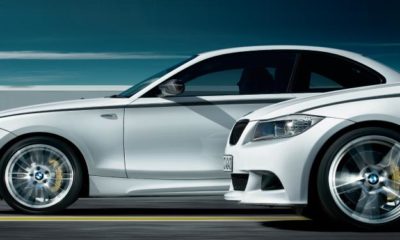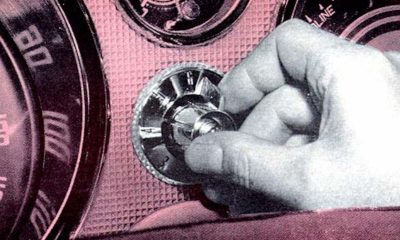BY pressing down on the accelerator pedal, whether gently or fiercely, you subconsciously measure the response to your request by monitoring the change in engine note, the severity of the feeling of being pushed back into the driver’s seat, the rate of acceleration and, most importantly, the delay time between your request and the response from the vehicle.
Engineers who work on accelerator-pedal calibration spend vast amounts of time perfecting the performance feel of a vehicle to align this aspect with its brand identity. We look at some of the secrets they employ, as well as the challenges.
The accelerator pedal
Before the age of computers, the accelerator pedal was connected with a cable to the butterfly valve of the carburettor in a predominantly petrol-engined, passenger-vehicle market. A linear movement in the accelerator position would have translated into a rotational change of the valve (opening it), with the two movements linked at a fixed ratio.
The mass of air passing through the valve would determine how much fuel could be added (at approximately stoichiometric air-fuel ratio of 14:1), with the fuel quantity directly influencing the response. As the opening area around the butterfly valve was not precisely linear with the angle, this influenced the performance feel characteristic of the vehicle by default.
Today, the accelerator pedal is software-linked to the engine by sending a variable-voltage signal (normally between 0 and 5 V, depending on the position) to the engine-control unit (ECU) of the vehicle. The software strategy inside the ECU determines how much fuel and air must enter the engine to fulfil the request from the driver. In a fuel-injected turbopetrol engine, this influences the following:
• Desired manifold pressure (boost pressure) and turbo wastegate position;
• Throttle-plate angle;
• Fuel-injection timing and quantity;
• Valve timing;
• Spark timing;
• Exhaust-gas-recirculation valve position.
All of the above are controlled at an extremely fast rate. As the link between the accelerator and the engine is software-controlled, calibration engineers aren’t limited to a fixed ratio of response as with carburetted vehicles.
Torque model
The most common control model is the torque version. This assumes that the request from the driver via the accelerator pedal is actually a torque request. The maximum torque possible at any given engine speed will equate to a 100 per cent torque demand – this is also the maximum torque curve of the engine.
Zero torque demand (driver’s foot off the accelerator) will equal the torque needed to keep the engine idling (plus powering all auxiliaries) with no extra torque available for tractive force.
Any demand from the driver for between zero and maximum torque will be interpolated (Torque-model example below). When the torque demand from the driver is established, all engine systems will be controlled (especially fuelling) to deliver the exact demand in the shortest time possible.

Diagnostics and safety
Owing to the safety risk inherent in unintentional acceleration, automakers employ various strategies to ensure safe driving (remember the major Toyota case in the USA a couple of years ago?). Firstly, dual redundancy can be found on the signal from the accelerator pedal to the ECU. Both signals run in parallel, with a range of zero to a 100 per cent depending on the pedal position. The ECU always uses the lowest value of the two signals. Diagnostics detect when the difference in values between the two signals falls outside an acceptable threshold and ignore the signals completely. In the case of the ECU receiving brake and accelerator signals simultaneously (a runaway situation in which the driver tries to stop the vehicle), the ECU ignores the accelerator input after a second or two, which allows the vehicle to be stopped safely.
Performance feel
As explained earlier, the software in the ECU forms the link between the accelerator input and the engine output. Accelerator-pedal-calibration engineers can now determine which percentage of pedal travel equates to the level of torque delivered. It is quite common for small-engined city vehicles to allocate a large percentage of torque to a small percentage of pedal travel (see below). This creates a feeling of responsiveness to the driver, but he will soon realise when he hits the motorway that there is not much reserve torque available in the remaining travel of the accelerator pedal.

Conversely, sportscars with powerful engines have high amounts of torque across the engine-speed range, so that more emphasis is put on a linear response from the accelerator pedal to increase driver control. Accelerator-response curves can be altered with vehicle speed and even the gear that is selected. This allows a performance vehicle to feel docile at parking speeds but more aggressive elsewhere in the vehicle-speed range.
After continuously driving the same vehicle, your brain subconsciously adjusts to the pedal calibration and only when driving a vehicle from another manufacturer will you notice a difference in response, even if the engine outputs, gearbox type and vehicle mass are similar. Automakers rely on acceleration-pedal engineers to calibrate a similar performance feel across the entire vehicle range to promote brand identity.
Drive-mode selector
Many modern vehicles, especially those fitted with automatic transmissions, have a drive-mode selector. The modes usually include normal, comfort and sport, and occasionally an economy setting. Yes, these modes can also influence suspension, steering and gearchange strategies, but a large component is reserved for accelerator-pedal mapping.
On the conservative side of the spectrum (economy and comfort), a large displacement of the accelerator pedal equates to a small torque demand. The ramp-up in torque demand occurs only at the last portion of displacement. At the more dynamic side of the spectrum (sport mode), the accelerator will be very aggressive, with a small displacement in the pedal resulting in a large torque request. Sometimes the pedal can become so aggressive that the driver may find it difficult to drive at a constant speed over a bumpy road due to the fact that he can’t keep his foot still on the pedal. This problem generally does not occur when a less aggressive setting is chosen. Interestingly, when the accelerator is fully depressed, the engine delivers a 100 per cent torque request in all settings in most vehicles.
Tip-in, tip-out
Although the response time of the driver’s accelerator input is important, the way in which the response is initiated is worth noting. When the driver applies a stepped input to the accelerator pedal, the engineers will calibrate a ramp-up in the air-fuel charge to avoid the creation of an unwanted jolt. The same principle is applied when the accelerator pedal is released. If the fuel supply is immediately cut, a shunt is sent through the drivetrain. Therefore, for the sake of smooth driving, the fuel demand is ramped out in less than half a second. (See Tip-in and tip-out performance below.)

The future
Although technology concerning the responsiveness of internal-combustion engines keeps improving, the response times still lag far behind those of electric motors. With their instant torque response from zero motor speeds, passenger-oriented electric vehicles (EV) offer exciting response even if their absolute power figures are not that impressive.
Currently, drivers have to choose between pre-calibrated accelerator maps in modern vehicles. However, soon they will be able to create their own mapping to suit their unique driving styles.
Hindrance to engine response
Even when the ECU receives 100 per cent accelerator input from the driver, it takes a finite time for all engine systems to respond and deliver the maximum torque demand at the flywheel. The main hindrance to engine response is inertia, the resistance of any physical object to a change in its state of motion or rest. Let’s assume the vehicle is travelling at constant speed and the driver mashes the accelerator to the floor. The following inertias need to be overcome in a turbopetrol before the torque is delivered at the flywheel:
• The rotational and linear inertias of the engine internals (for example crank, connecting rods, pistons and flywheel);
• Air inertia (mass of air) that needs to travel through the intake manifold supplying the engine;
• Exhaust-gas inertia supplying the turbocharger in turbo engines;
• Turbo-impeller rotational inertia in turbo engines.










